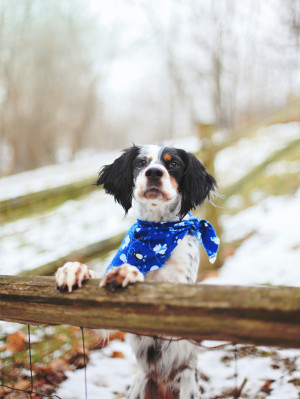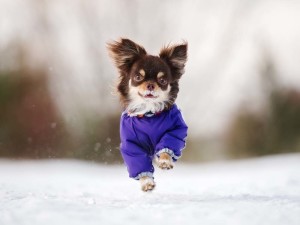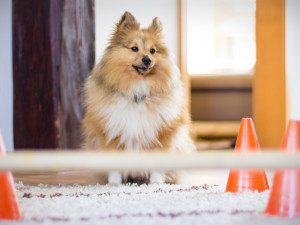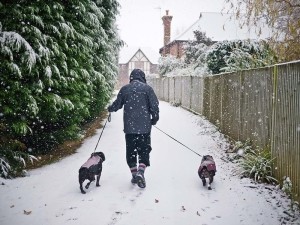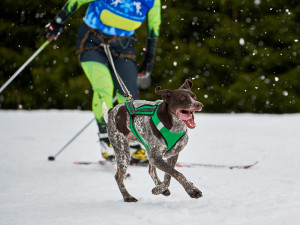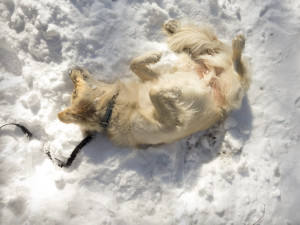9 Ways to Keep Your Dog Safe in the Snow
Sometimes, your pup has to be exposed to the elements—and you have to keep them warm when they are. Here’s how.
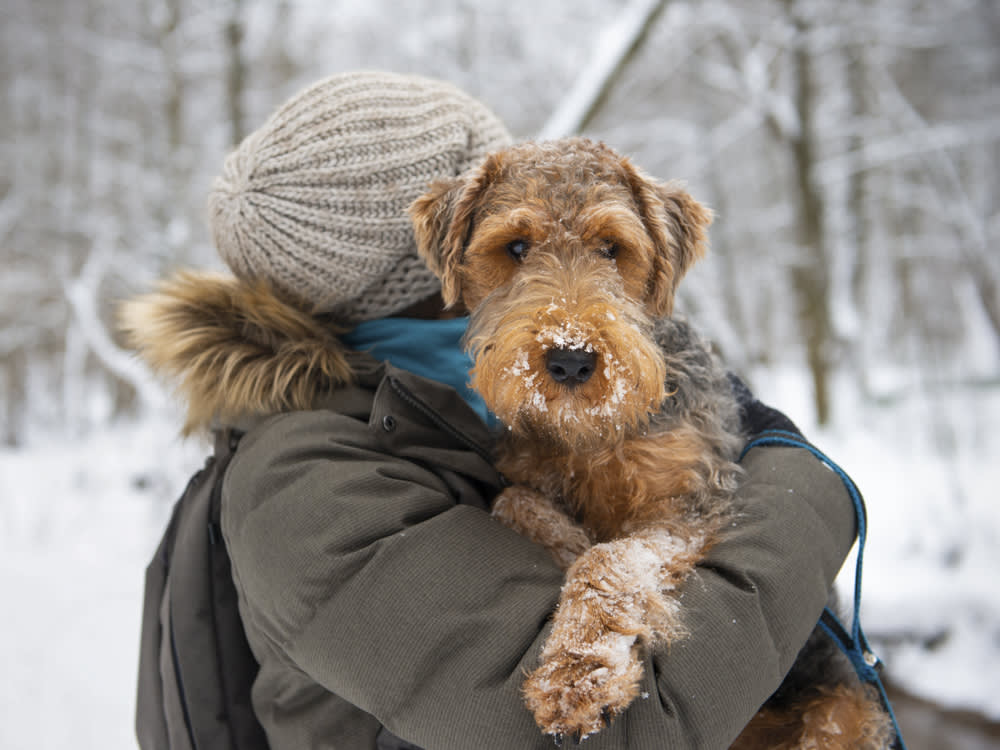
share article

Your pet wants you to read our newsletter. (Then give them a treat.)
As idyllic as a winter with your pup might sound (who doesn’t love a dog in a chic coatopens in a new tab?), harsh weather can be dangerous for humans and animals alike.
“It is very important to keep your pet safe and healthy during the winter season, especially during storms,” says Dr. Aaron Vine, a veterinarian at Central Veterinary Associatesopens in a new tab. “The extreme cold may have an adverse effect on your pet’s health, so pet parents must take the necessary precautions for their pets when bringing them outside. It is especially important during extreme weather circumstances to ensure that your pet is microchippedopens in a new tab, which makes it easier to locate them. In the event they become ill as a result of being exposed to the elements, please bring them to a veterinarian immediately.”
Below, nine more winter safety tips from Dr. Vine.
1. Always dry off your wet dog.
When your dog comes in from the snow, ice, or sleet, be sure to thoroughly wipe down their paws and stomach. They may have rock salt, antifreeze, or other potentially dangerous chemicals on their paws which, if ingested, can cause severe stomach problems. Antifreeze should especially be watched for, as it can lead to kidney failure. In addition, paw pads may get cut from hard snow or encrusted ice, so it’s important to check them over and treat them accordingly.
2. Keep bedding warm.
Make sure your dog has a warm place to sleep, off the floor and away from all drafty areas. A cozy pet bed with a warm blanket or pillow is the next best thing to letting your pup sleep in bed with youopens in a new tab.
3. Hold off on haircuts.
Save for extreme circumstances, you should never shave down your dogopens in a new tab during the winter. Their long, thick coats are vital for protection from the cold. If you have a short-haired breed, consider getting them a coat or a sweater with coverageopens in a new tab from the base of the tail to the belly.
4. Shorten bathroom breaks.
If you have a puppy or senior pet who is sensitive to the cold, it may be difficult to take them outsideopens in a new tab. Shorten bathroom breaks to quick trips outside rather than long walks, or use pee padsopens in a new tab on particularly nippy nights so your pet doesn’t hold it and risk getting a UTI.opens in a new tab If your pet gets cabin fever from the limited exercise, turn to indoor interactive gamesopens in a new tab to keep them mentally and physically stimulated. And when they do make it outdoors, always ensure they’re wearing a warm sweater or jacketopens in a new tab.
5. Bring outdoor pets in
If domesticated animals are left outdoors during winter months, they run the risk of health conditions caused by extreme temperatures. Cats are especially susceptibleopens in a new tab because they have free reign of the outdoors and can become lost during a storm. Just like in the summer months, you should never leave your pet alone in a car in cold weather; they could freeze and develop serious cold-related health conditions.
6. Keep your pet on a short leash.
Never let your dog off leash on snow or ice, especially during a snowstorm, as they can lose their scent and easily become lost. More dogs are lost during the winter than any other season, so make sure that your dog always wears their identification tagsopens in a new tab. In addition, all pets should be outfitted with a microchipping device.
7. Check your engine.
As you’re getting into your car in the morning, bang loudly on the hood before starting it. Outdoor cats and wild animals like to sleep under cars, within the engine compartment, or in the wheel base as the engines keep the vehicle warm long after the car is parked. However, once the car is started or in motion, the cat can be injured or killed by the fan belt or tires.
8. Beware of ice melt (salt)
Salt and ice melt (most common in urban areas) can cause chemical burns on animals’ paws, so always ensure your dog is wearing booties or apply a paw waxopens in a new tab to act as a barrier.
9. Clean up spills
If you spill any antifreeze or winter-weather windshield fluid, be sure to clean it up immediately. Pets, especially cats, are enticed by the sweet-tasting liquid, but it is poisonous. Ingesting antifreeze leads to potentially life-threatening illness in all animals, domesticated or otherwise. If possible, use products that contain propylene glycol, rather than ethylene glycol.

Claudia Kawczynska
Claudia Kawczynska was co-founder and editor-in-chief of The Bark for 20 years. She also edited the best-selling anthology Dog Is My Co-Pilot.
Related articles
![Shetland sheepdog sits in front of a obstacle course for dogs in the living room]() opens in a new tab
opens in a new tab3 Fun Indoor Games to Play With Your Dog
Rainy day? These activities will keep your dog (and you!) from going stir crazy.
![shaggy brown dog plays in the snow outside]() opens in a new tab
opens in a new tab8 Activities That Keep You and Your Dog Out of the Snow
Tips to avoid boredom when cooped up during all this winter weather.
![Person with two small dogs that won't poop in snow]() opens in a new tab
opens in a new tabHow to Teach Your Dog to Poop in the Snow
Snow days are fun—until your pup needs to do their thing outside.
![Skijoring brown dog in snow sport racing with owner]() opens in a new tab
opens in a new tabA Guide to Skiing With Your Dog
Dogs don’t have to be pro athletes to enjoy some quality time in the snow.
![A couple bundled up for winter standing outside in the snow with their dog.]() opens in a new tab
opens in a new tabCan Dogs Get Frostbite?
Yep, all those warnings your mom gave you as a kid apply to your dog, too. Learn how to keep your pup safe in the cold.
![Winterizing your dog's coat - Dog laying in the snow.]() opens in a new tab
opens in a new tabNatural Remedies for Dry Skin: How to Help Dry Skin on Dogs
Spoiler: These at-home remedies are probably already in your pantry.
